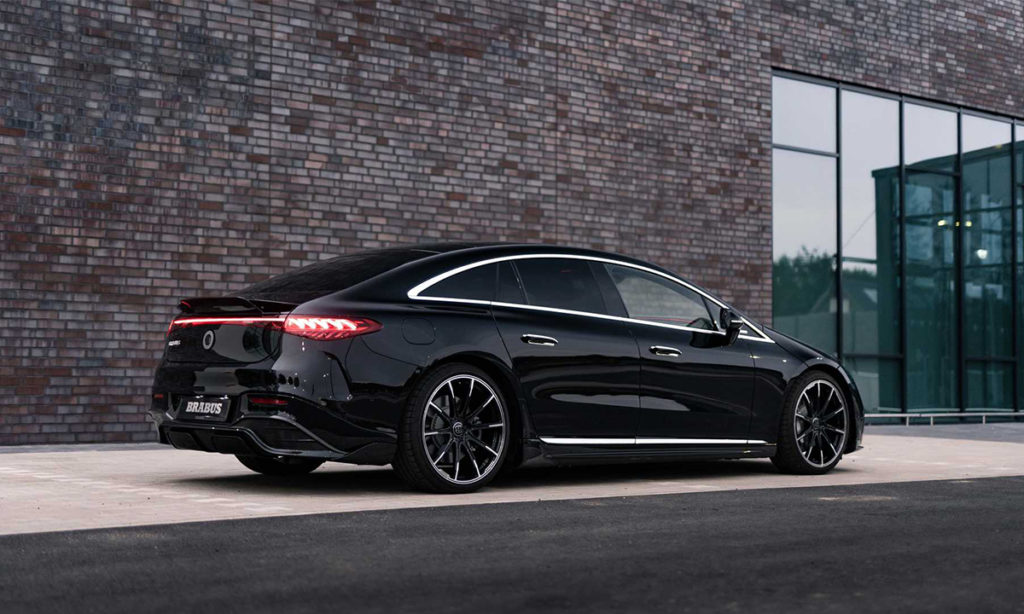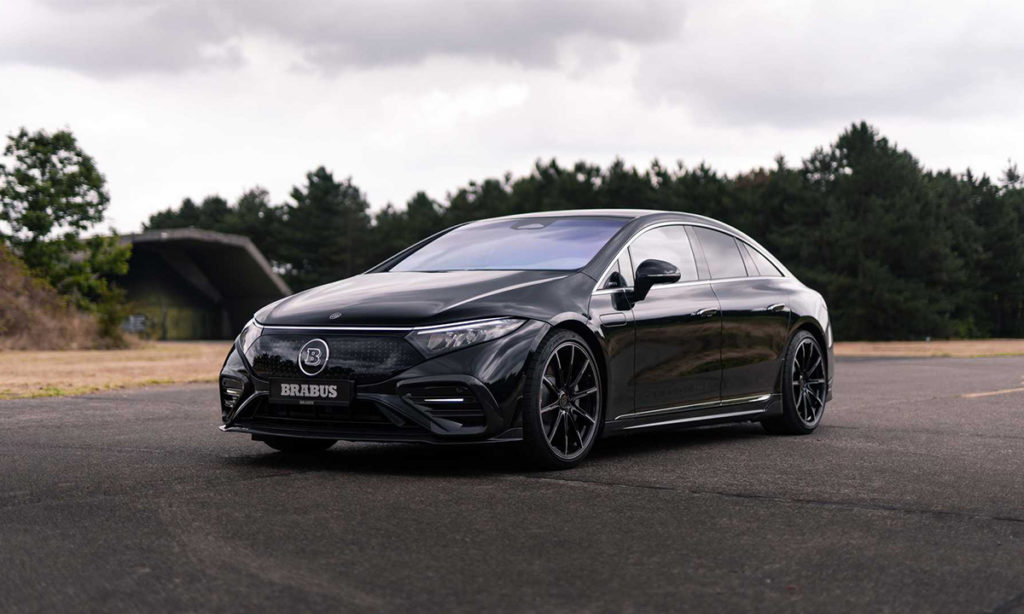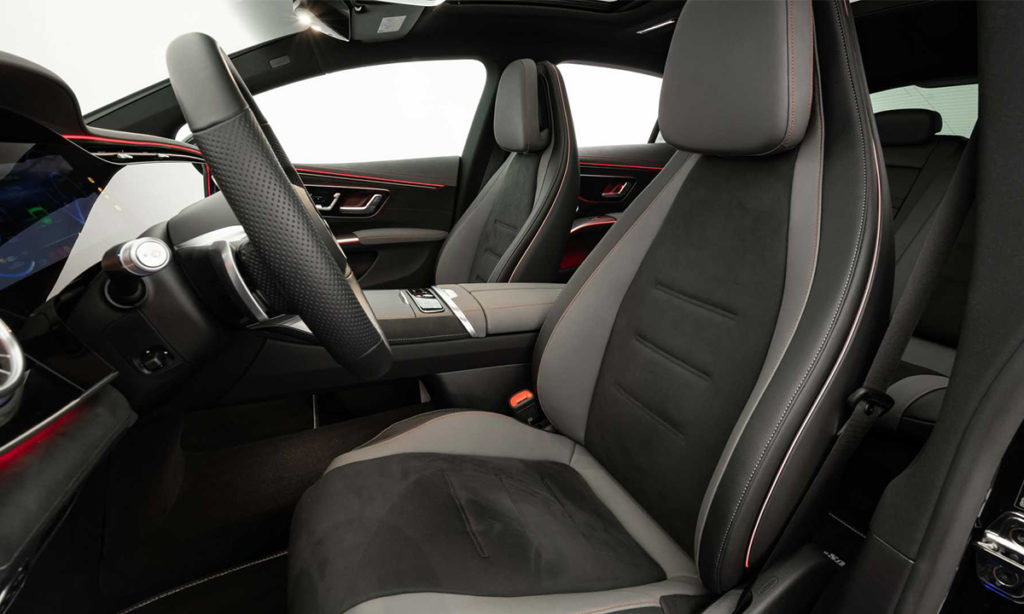The windtunnel photos aren’t just for show, Brabus has put the Mercedes EQS with their bespoke body kit through its paces to ensure that the liftback is far sleeker from when it left the production line at the Sindelfingen plant.

First thing is first – those oh-so retro Monoblock wheels. Brabus has adapted the current design to fit their EQS in either 20- or 22-inch sizes. The latter will employ 255/35 ZR22 tyres up front while a set of extra-thick 295/30 ZR22 rubber will line the rear wheel wells. Keen observers would be able to tell that this liftback has also been given some more aggressive stance to match the outlandish rims and subtle body tweaks. The exact number up front is 15 mm while the rear is haunched down by 20 mm compliments of a modified air suspension setup.
All of that aside, Brabus has prided themselves in improving the drag coefficient and thus the efficiency of the Mercedes EQS. In addition to those forged alloy rims, Brabus has managed to achieve this by installing an aerodynamic body kit onto the EV. This comprises a front spoiler while the rear receives a subtle lip. On the sides, air deflectors sit just before the rear arches and merge into the side skirt. All of the above are made from lightweight carbon and can be finished in either a gloss or matte finish.

All of this means that Brabus has been able to improve the range of the EQS by as much as 7% when compared to its standard counterpart at speeds between 100 km/h and 140 km/h. Intriguingly, when the tuner put the EQS in a wind tunnel for testing, the already sleek liftback which boasts the lowest drag coefficient of production cars was able to lower its Cd by 7,2%.
WATCH: This lowered Audi RS e-tron GT bodes well for future modification

On the inside, Brabus can tweak the finishes and materials to customers wishes but this is another step into the right direction for the aftermarket world of EV modification.






















